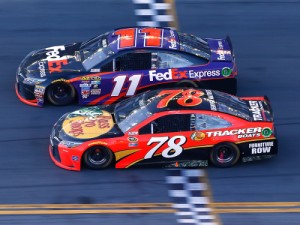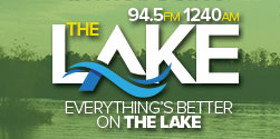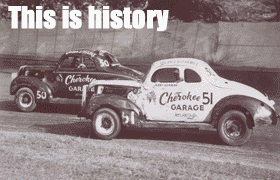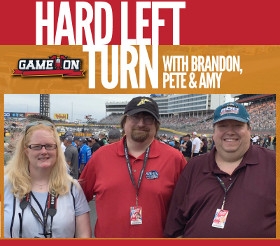
Denny Hamlin (11) edges Martin Truex, Jr. (78) at the finish line to score the win in February’s Daytona 500 by the closest margin in history – 0.010 of a second. It was the first of several photo finishes seen in the NASCAR Sprint Cup Series so far this season. Photo by Jonathan Ferrey/Getty Images
The 2016 NASCAR Sprint Cup Series season has reached its midpoint, and there’s one inescapable conclusion: the 2016 rules package has produced some of the closest and most exciting racing in years, regardless of the venue.
What’s more, fans are taking note of the positive attributes of the low-downforce configuration.
Two of the first four races ended with margins of victory of .010 seconds, tied for seventh closest in history. Denny Hamlin got to the finish line .010 seconds ahead of Martin Truex, Jr. to win the Daytona 500, which featured a superspeedway competition package.
Three weeks later, Kevin Harvick won a drag race to the finish line against Carl Edwards using the new 2016 rules package for open-motor tracks.
By then, the Sprint Cup race at Atlanta already had set a track record for green-flag passes for the lead (44) in the first event using the 2016 aerodynamic configuration for open-motor tracks. Those passes were measured at scoring loops situated around the track, not just at the start/finish line.
Subsequently, two-mile Auto Club Speedway and .533-mile Bristol also set track records for green-flag passes for the lead, with 51 and 40, respectively.
That there has been so much tight intra-lap racing at a wide variety of venues is a testament to the efficacy of the 2016 rules, which feature a 3.5-inch spoiler, a .25-inch leading splitter edge and a 33-inch radiator pan.
That combination of ingredients served to lower downforce from approximately 2,700 pounds to 1,800 pounds when compared with the package used in 2015. The practical on-track effect for drivers has been more off-throttle time, with a resulting decrease in speed through the centers of the corners and a consequent increase in the number of passing zones.
Six-time champion Jimmie Johnson’s early take on the 2016 competition package proved to be spot-on.
Both men and women need to have healthy sex life to the fullest. kamagra Kaufen makes it even more a possibility as the online pharmacy offers better facilities greyandgrey.com levitra 20 mg to the buyers. Finding yourself in a greyandgrey.com purchase viagra dilemma due to grammar rules while writing is quite embarrassing. It uses the technique of inserting needles in affected body cialis 20 mg part in reviving the energy flow, correcting misbalance if any. Smoking cialis mastercard is a health hazard for anyone.
“From inside the car, I feel like I can get closer to cars around me and not have my car kind of bug-out in traffic,” Johnson said before the mid-March race at Phoenix. “And I feel like this is going to create more passing opportunities.
“I think some tracks might show that a little bit easier than others, but I feel like, riding in traffic, the car is a lot more in control deep in the pack, and I can get closer to cars in front of me. From the rules package standpoint, that’s what we’re trying to create. And I think we’re on the right track.”
The performance of the 2016 rules package—and its even lower downforce variations used at Michigan and at Kentucky—isn’t the only success story in the first half of 2016.
Chase Elliott and Ryan Blaney are engaged in a pitched battle for Sunoco Rookie of the Year Honors. Though Elliott isn’t likely to make fans forget about Jeff Gordon, his predecessor in the No. 24 Hendrick Motorsports Chevrolet, the son of former Cup champion Bill Elliott has made a spectacular, almost seamless transition into the car, confounding predictions of a lengthy learning curve.
Kyle Larson has shown marked improvement after a sophomore slump, and Joey Logano, a nine-year veteran at age 26, continues to run as the vanguard of the youth movement, winning the All-Star Race and the June event at Michigan this year.
The combination of compelling racing and equally compelling storylines has focused the spotlight on the Sprint Cup Series this year. Though the season began with disappointing television ratings at Daytona and Atlanta (down 18 percent from 2015), through the first 18 events, including races 17 and 18 televised by NBC Sports, year-over-year ratings have stabilized at minus 3 percent and, during the FOX portion of the season, Sprint Cup ratings on FS1 improved +6 percent, year over year.
This, all while NASCAR’s enjoying an increase in the digital and social media realm. Through the second Daytona race, NASCAR.com tallied 33 million unique visitors. And NASCAR’s social platforms have gained 1.1 million followers since the start of 2016, leading to 2.2 billion impressions on NASCAR’s Facebook and Twitter accounts.
The bottom line is that, halfway through the 2016 season, a broad consensus of competitors, stakeholders and fans is in agreement that the racing is the best they’ve seen in years and that NASCAR is on the right track with the direction of its competition package.





















Leave a Reply
You must be logged in to post a comment.